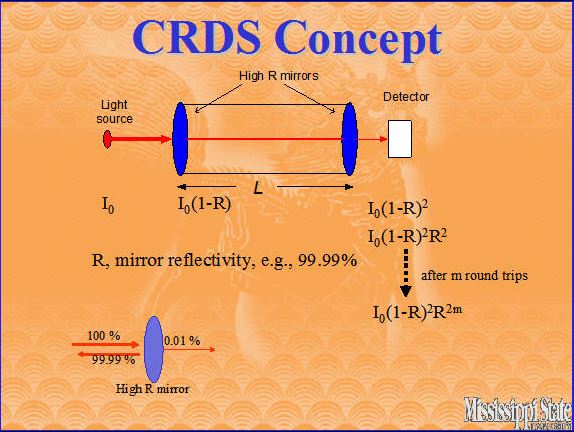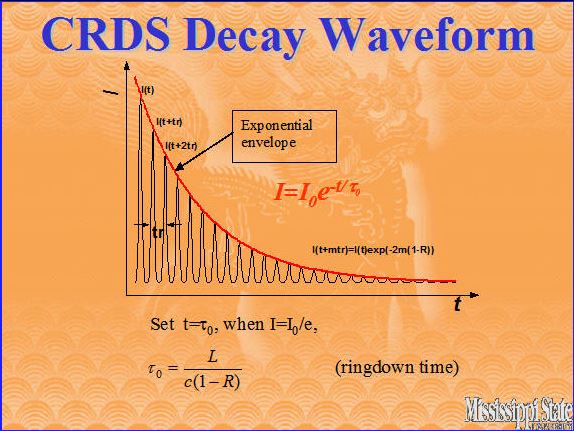Cavity ringdown spectroscopy (CRDS), a laser absorption spectroscopic technique,for many round trips within the cavity, thus effectively enhancing the laser beam absorption path-length by several orders of magnitude. (CRDS is considered being one of many cavity enhanced absorption spectroscopy methods). Therefore, the detection sensitivity is correspondingly enhanced by several orders of magnitude as compared with the conventional single-pass absorption spectroscopy. In CRDS, a small fraction of the laser beam leaks out in each round trip to a photodetector that monitors the decay of light intensity within the cavity, and the decay time constant (referred to as ringdown time), rather than the change of the light intensity, is measured. Thus, the performance of the technique is almost unaffected by fluctuation noise of the laser source. Under appropriate experimental conditions, the intensity decay curve is single-exponential and the absorption experienced by the laser beam follows Beer’s law. Absolute absorbance (consequently the analyte concentration) is determined by measuring the ringdown times with and without an absorbing species in the cavity, or by measuring the ringdown times through tuning the laser frequency into resonance or off-resonance with a spectral transition line. A typical ringdown event (ringdown decay) is on the order of microseconds, depending on the physical parameters of the cavity and the absorption features of the species.
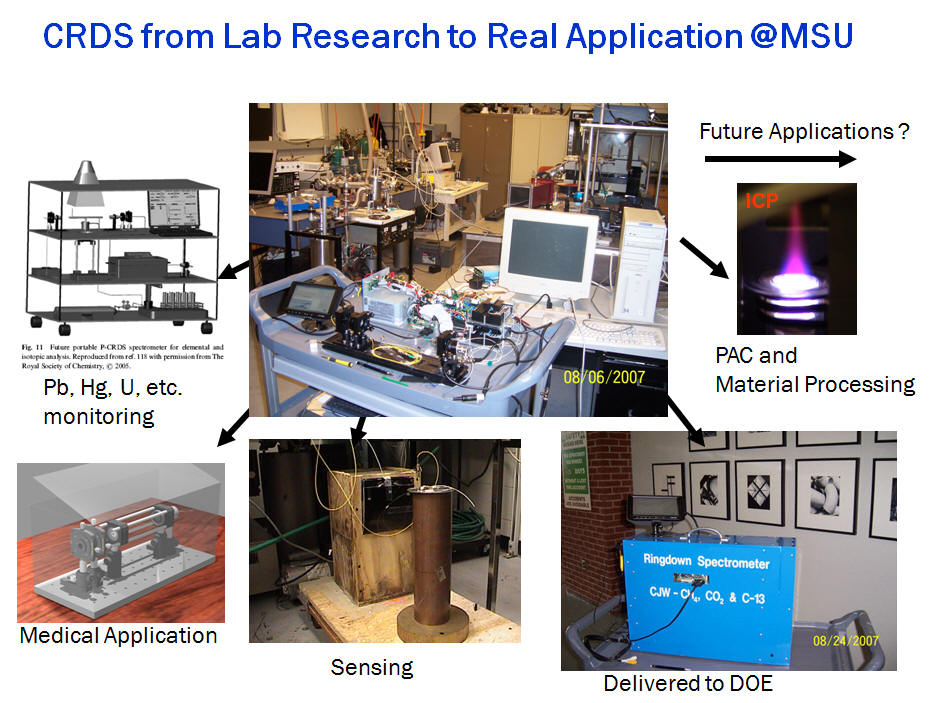
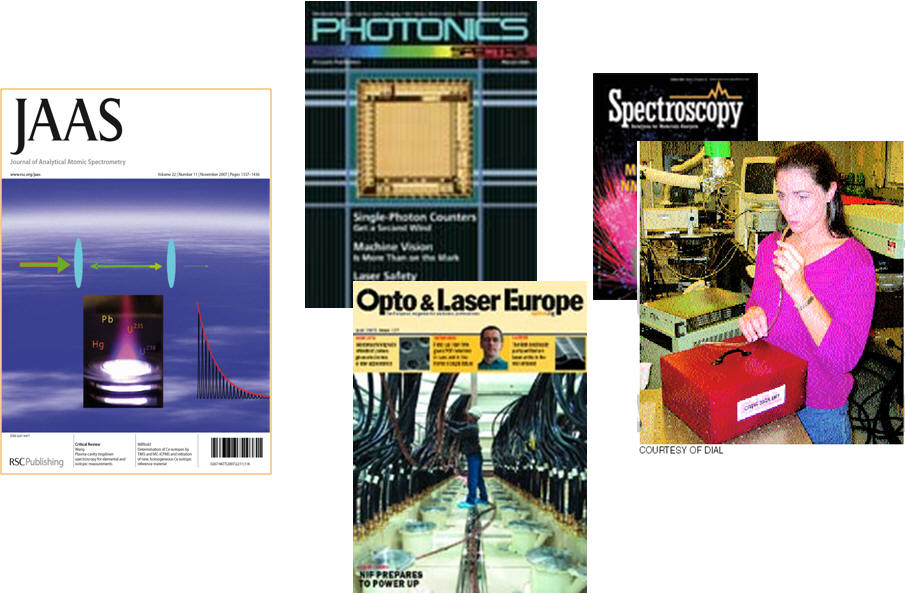




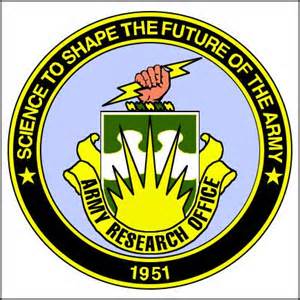
 Savannah River National Laboratory
Savannah River National Laboratory